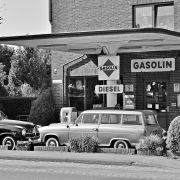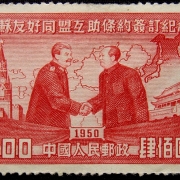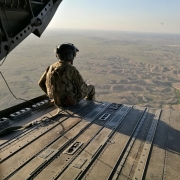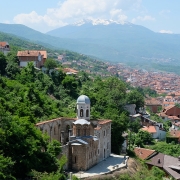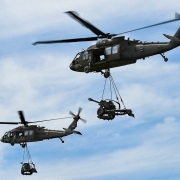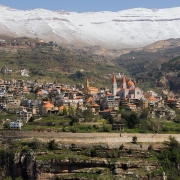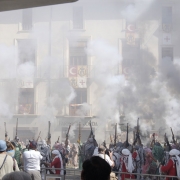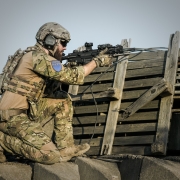What caused the energy crisis of the 1970s?
What was the oil shocks about?
Following a period of rapid economic modernization, also known as the ‘Golden Age of Capitalism‘, the world witnessed a sudden turn of events that resulted in the gradual decline in this fast-paced growth, ushering the ‘Crisis Decades‘. The twin oil shocks that took place in 1973 and 1979 were the result of geopolitical conflicts that involved the key driver of the global economy – USA – as well as the OPEC (Organization of the Petroleum Exporting Countries) that dictated the output of oil. In general, the surge in oil prices dealt a significant blow to many economies, including USA, reflecting the significance of oil as an essential resource for households and firms.
Topic of Study [For H2 History Students]:
Paper 1: Understanding the Global Economy (1945-2000)
Section B: Essay Writing
Theme II Chapter 2: Reasons for problems of the global economy
In the next section, we will look at the background causes to understand what happened during the energy crisis of the 1970s.
1. [USA] 1973 Oil Crisis: Causes
There were two major factors that contributed to the start of the 1973 Oil Crisis – the dismantling of the ‘Gold Standard’ (US Dollars -Gold) fixed exchange rate system as well as the Yom Kippur War.
On 15 Aug 1971, US President Nixon announced that the United States would cease to maintain the Gold-USD standard fixed exchange rate system, which was based on the 1944 Bretton Woods Agreement. Consequently, the loss of market confidence towards the USD resulted in its depreciation (fall in currency value). In contrast, many firms and investors valued gold, contributing to the surge in gold prices.
However, the depreciation of USD undermined the OPEC as their export revenue (earnings from the sale of oil) was in USD. Therefore, OPEC lost a significant proportion of its export earnings.
The second factor was the Yom Kippur War, which began on 6 Oct 1973. Following Israel’s victory during the Six-Day War in 1967, both Egypt and Syria deployed its military to attack Israel on a religious day for the Jewish population, known as the Yom Kippur. Several weeks later, Nixon sought Congress funding of $2.2 billion to provide military backing for Israel.
2. [OPEC] Oil Embargo of 1973: Consequences
In view of the American intervention in the Yom Kippur War, the OPEC members in the Middle East, such as Egypt and Syria, protested by engaging in an oil embargo. This embargo persisted even after the end of the Yom Kippur War, thus triggering a global energy crisis.
The price of crude oil surged from $3/barrel to $12/barrel in 1974. The oil crisis was arguably a major cause of the economic recession in the developed economies from 1973 to 1975.
In the US, the economy experienced stagflation, in which there was high inflation, high unemployment and slow economic growth rates. Unemployment rate peaked at 9% in 1975.
In the UK, it experienced a fall in GDP (Gross Domestic Product) by 3.9% in the same time period. Also, the UK experienced double-digit inflation that went beyond 20%.
3. [USA & OPEC] 1979 Oil Crisis: Causes
The energy crisis resurfaced in the late 1970s. Primarily, the Iranian Revolution of 1979 was a major contributing factor that led to the spike in oil prices. After the departure of the Shah of Iran, the world supply of crude oil fell significantly.
4. 1979 Oil Shocks: Consequences
Similar to the 1973 energy crisis, the oil shortage was detrimental to the oil-dependent economies. The price of crude oil increased to nearly $40/barrel from 1979 to 1980.
In the US, many households were forced to undergo conservation, since petrol and fuel were needed for transport and other domestic purposes (like cooking). Also, the automobile companies, such as Detroit’s “Big Three” (General Motors, Chrysler and Ford) suffered from the oil spike.
In contrast, Japanese manufacturers adapted to the situation by producing fuel-efficient automobiles, which then captured a significant market share in the global industry.
On a separate but related note, the OPEC earned a significant sum from the sale of petroleum exports – known as ‘petrodollars’. OPEC members then placed their earnings in international banks, which were handed out to developing nations as loans. Later, this petrodollar recycling process was known to have contributed to the ‘Third World Debt Crisis‘ of the 1980s.
What can we learn from this case study?
Consider the following questions to understand this economic issue:
– How far do you agree that the energy crisis of the 1970s was more significant than the debt crises of the 1980s in causing the problems of the global economy? [to be discussed in class]
Now that you have studied the key considerations, you can enhance your knowledge application skills through the answering of History Essay questions. Join our JC History Tuition and find out how we teach you to form clear and logical arguments to answer fundamental and complex questions effectively and efficiently.
The H2 and H1 History Tuition feature online discussion and writing practices to enhance your knowledge application skills. Get useful study notes and clarify your doubts on the subject with the tutor. You can also follow our Telegram Channel to get useful updates.
We have other JC tuition classes, such as JC Math Tuition and JC Chemistry Tuition. For Secondary Tuition, we provide Secondary English Tuition, Secondary Math tuition, Secondary Chemistry Tuition, Social Studies Tuition, Geography, History Tuition and Secondary Economics Tuition. For Primary Tuition, we have Primary English, Math and Science Tuition. Call 9658 5789 to find out more.

